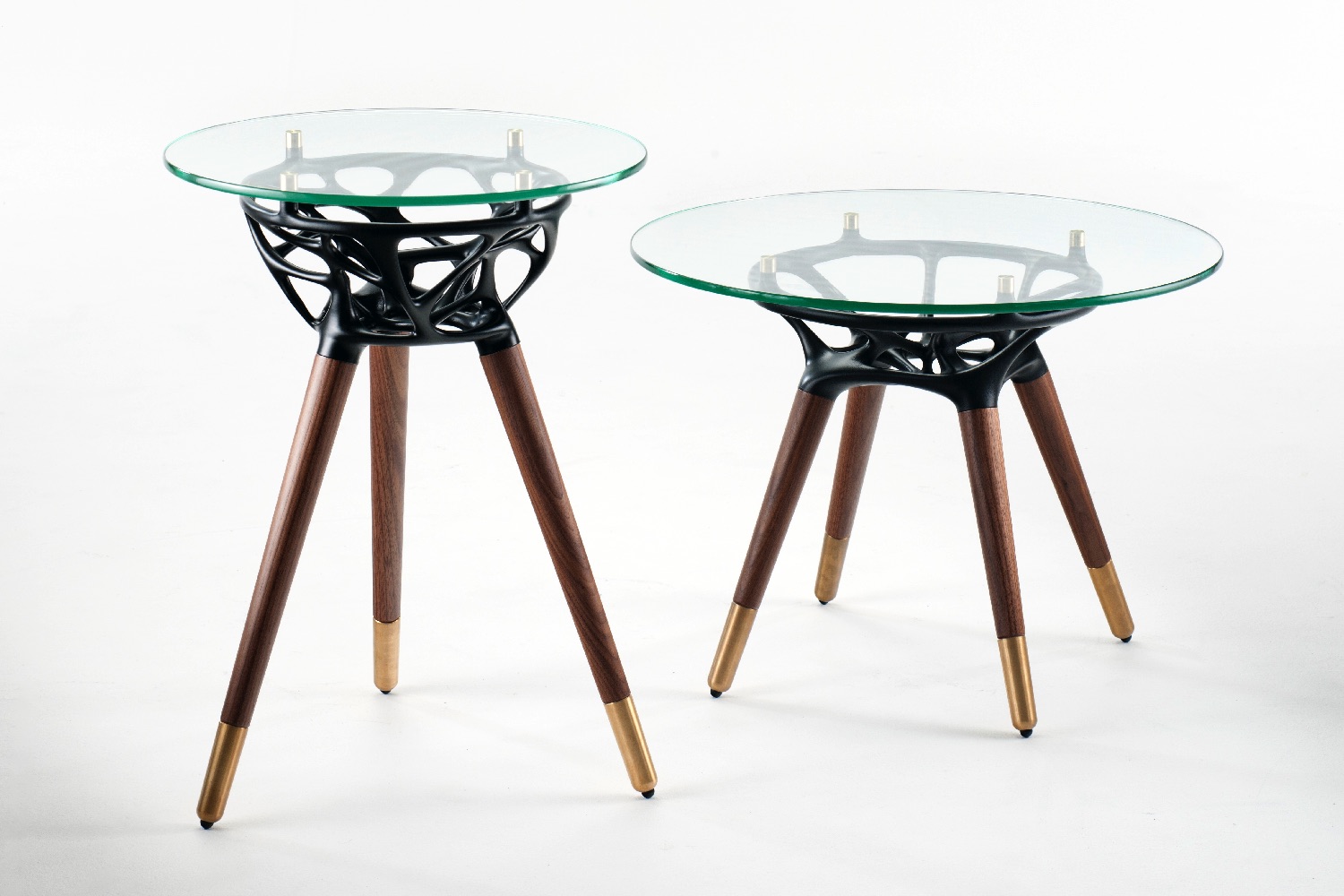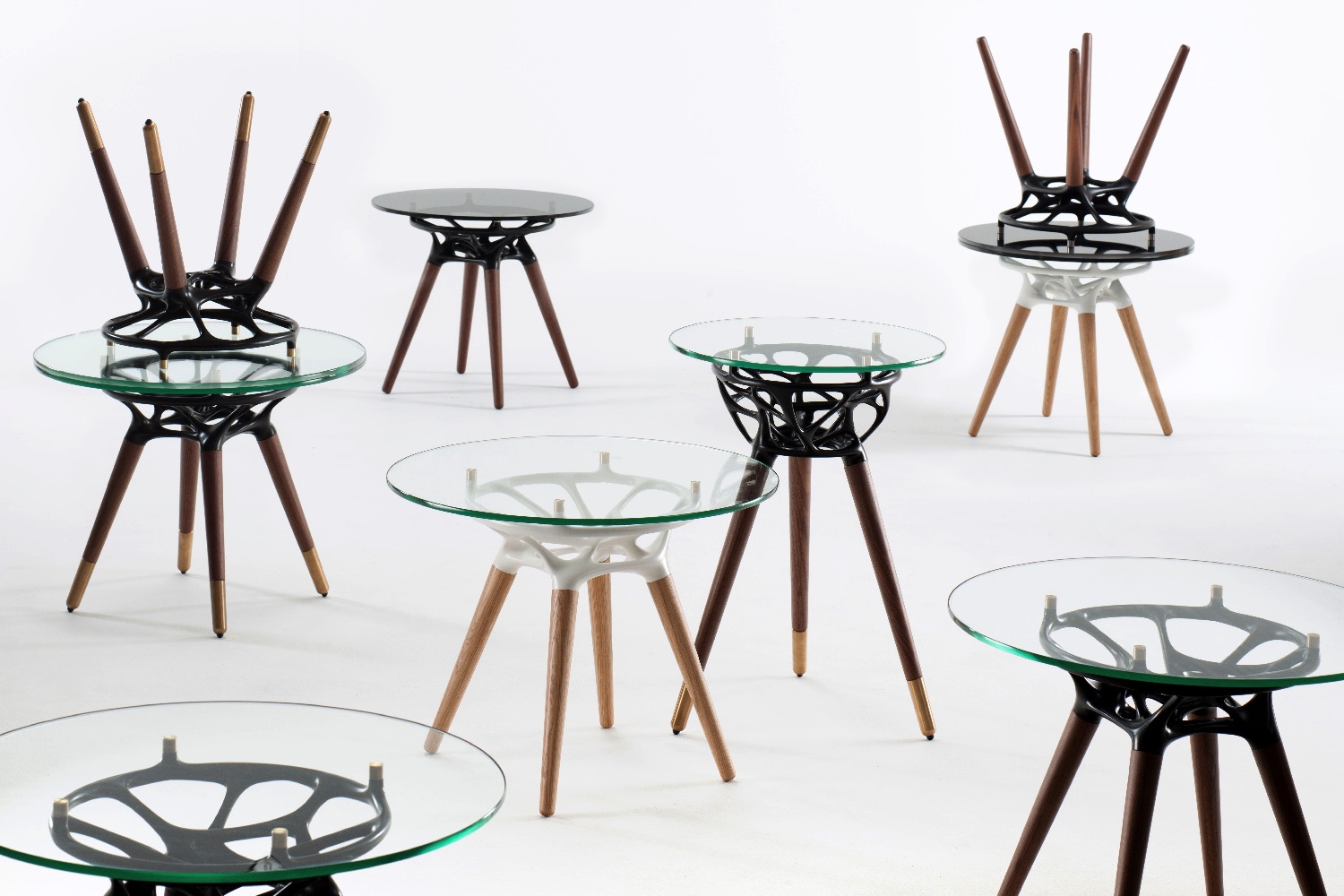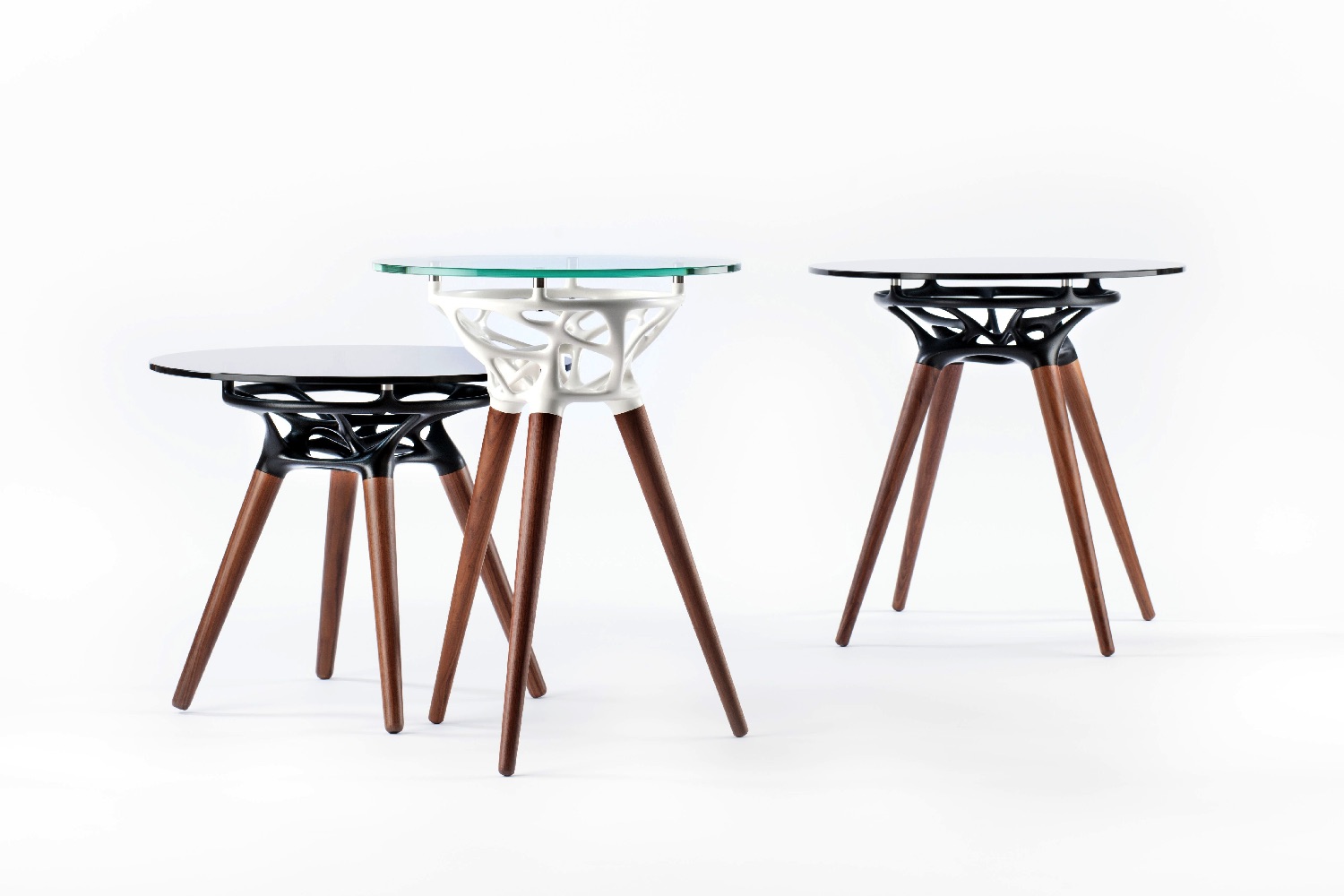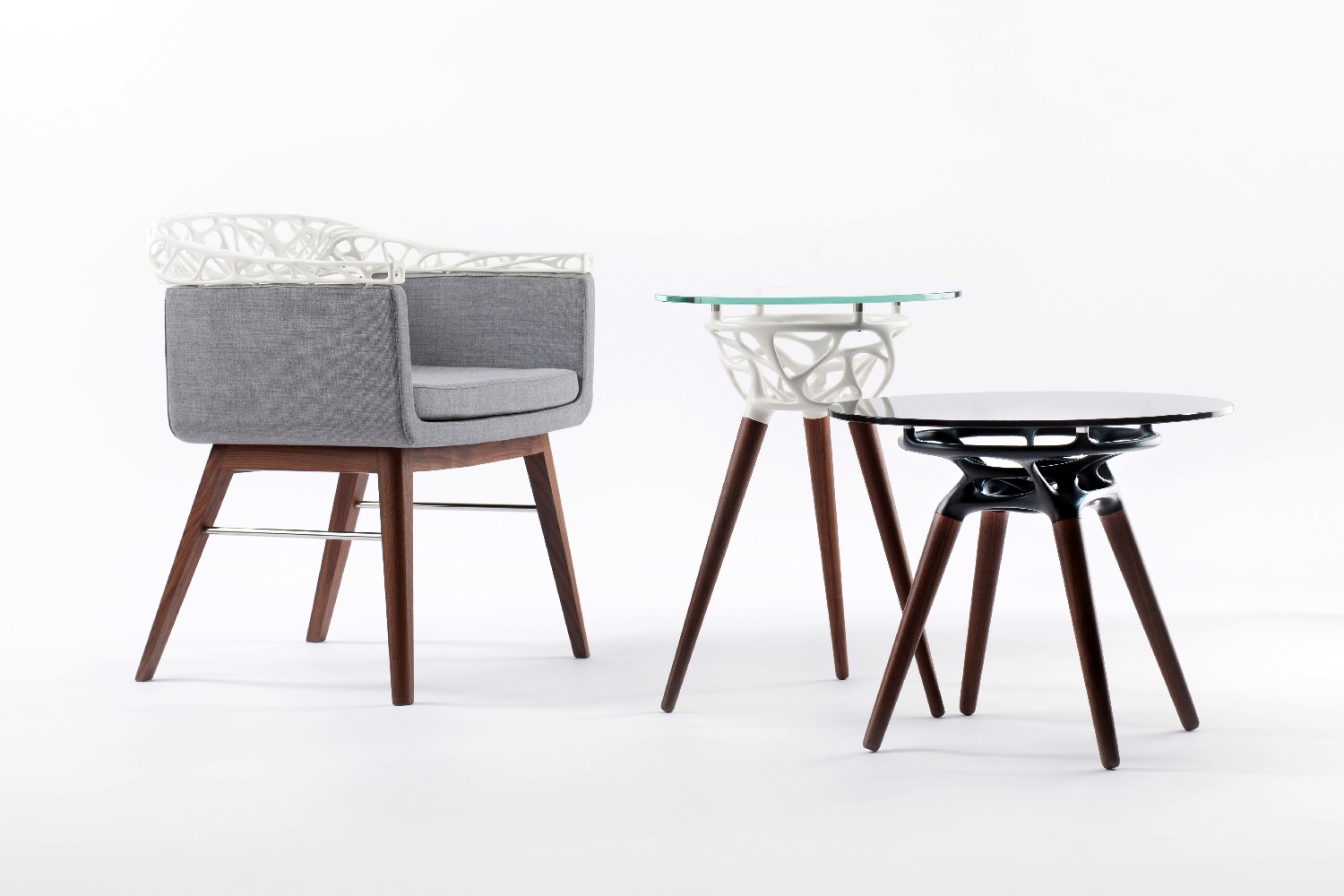Designing for British furniture brand Morgan, Studio Integrate has created a new table that uses 3D printing and genetic algorithms to create its unique sculptural latticework.
A genetic algorithm is computer programming capable of generating multiple evolutions of an idea, similar to what you would find in the natural world. The result is a creation that not only looks organic, but spawns unique items containing the same individual quirks you would find in a handmade object.
“I like the idea of using evolution to drive design forward to create new, novel objects,” Mehran Gharleghi, director of Studio Integrate, told Digital Trends. “The concept of using genetic algorithms was not to just imitate nature in terms of design, but actually to learn from it.”
The so-called Rio table isn’t the first time Gharleghi has used genetic algorithms in his work. In an earlier collaboration with the Morgan furniture brand, he used 3D printing and smart computer code to come up with Rio chairs, which use a similar design language and philosophy.
“With the chairs, I was able to use 3D printing to make them very light and flexible, while also strong enough to hold the weight of a person,” he said. “In that case, I used algorithms to calculate the geometry to find a balance between strength, weight, and flexibility. The table had a different set of criteria, because while the chairs needed to be flexible, the table had to be rigid — although we wanted all the pieces to look like they shared the same design.”
It’s an original concept that reminds us that, in the digital age, mass-produced items no longer have to all look the same. If you fancy filling your home with furniture that looks like it belongs together, but still has originality in each piece, Gharleghi’s work represents the perfect solution.
“It brings a bit of personality,” he said. “Think about a population of people. From a distance, we might broadly look the same, but up close we all have our unique differences. It’s the same with this work.”







